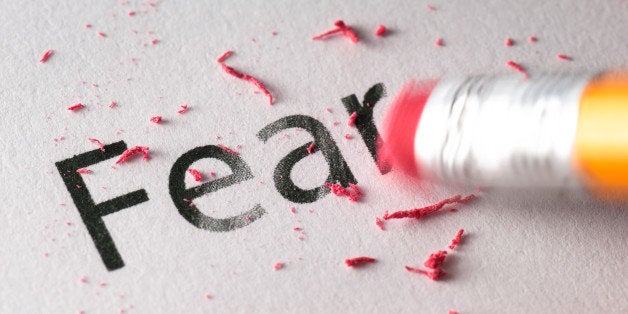
Numbers can be a powerful thing. They can give way to legitimate concerns, or they can prevent unreasonable worries, that is if we let them.
My partner has a fear of flying. Apparently, 25 percent of the population does, too.
There is a 1 in 29.4 million chance of her being in a plane crash. Knowing this is enough for her to get on a plane, but not without some sedative (preferably in liquid form).
I believe I have a healthy fear of the ocean and am afraid of a shark attack.
It is 1,817 times more likely I'll drown than be attacked by a shark. In other words, more likely than a plane crash, if it makes her feel any better.
Most of us agree that evidence deciphers realistic fear from the unrealistic. We don't need national health institutes to explain the benefit of being informed, yet so many "what-if" articles begin to make us second-guess. Sometimes a related circumstance is used to support the fear regardless of it being so extraordinarily rare. Consider the recent EgyptAir 804 devastation amidst the thousands of flights that day or since the last plane crash, not to mention the 100x probability of a dire car accident. It speaks to why a plane crash makes the news. The unusualness compiled with the number of deaths at the instance piques our emotion compared to the number of road fatalities happening every day.
Too often we feed our anxiety by validating them with quasi-research or faulty logic, such as personal experience or availability bias, that is to say, justifying my reasoning through my adjoining emotions rather than by broader statistics. For instance, these SoCal paddleboarder's videotaped experience of being surrounded by juvenile great whites is enough for me. By validating my fears with this simple Google search, the deeper my heels go in.
I will, however, experience a much more predictable stressful reality: using public bathrooms. I'll do what I can to avoid them. Every time I step into one, I can feel my stomach tighten. My eyes scan the floor for feet, hoping for the stall not directly in front of the mirror-flanked sinks that face the usual, but still hush-hush, happenings only a courtesy flush can moderate. After a quick seating arrangement analysis--how high, low or crooked--I turn to fight the wonky lock (if there is one), often to only find I have to hoist the door to secure it all into place. Unfortunately, once settled, I still find myself more perturbed by the person sitting next to me than the scant paper roll. Millions of people experience higher distress levels of this, which elicits a real anxiety disorder known as toilet phobia.
For me, though, I can't help to think perhaps it's my own privilege to be so self-absorbed with the bathroom set-up should someone perchance see me doing the necessary, or worse, hear me. The last thing I think about is a perpetrator or assault despite the fact 25 percent of female rape perpetrators are strangers. Although, I'm not sure how many of those occur in shared bathrooms while constantly rotating people in and out, which are the ones under the main scrutiny.
When taking children to the loo, of course, that's a different story. I wouldn't leave them unattended even before the entire "no trans in the bathroom!" uproar. But that's also due to kids' lack of judgment and bathroom hygiene. Even if I trusted them with that, I would still require them to go in pairs.
Still, while 10 percent of child sexual assault is by strangers, 90 percent is by those known and trusted. God forbid we neglect that 10 percent. But as others have pointed out, the negligence on the overwhelming majority is damning.
Over 200 cities and 18 states have already passed bathroom laws protecting transgender men and women access. According to ABC News, each state reports an absolute 0 percent increase in sexual assaults after such government decrees. It begs the question as to why such laws like North Carolina's HB2 seem necessary. Notice how quickly the rhetoric regarding the issue has changed, though. At first, vocal ignorance condemned the transgender community as the predatory perverts. Those voices were quickly shut down by the facts, yet overran with "what-if" of real predators abusing the non-discriminatory bathroom access. Again, no such evidence of that happening exists, yet the fear still does.
Conversely, according to the U.S. Department of Justice, 1 in 2 transgendered people are victims of sexual abuse or assault at least once in their lives.
Such data corresponds with a survey published in The Journal of Public Management and Public Safety in 2013 on gender non-conforming individuals and bathroom stress. Of the transgendered respondents, 70 percent experienced harassment when attempting to use public bathrooms, from denied access to physical assaults. Additionally, more than half suffered physical problems from "holding it" to avoid public bathrooms, which are the same physical effects among those with toilet phobia. The difference, of course, is the root of the symptoms--giving into an imagined idea of odds compared to a high probability.
People's fears have become so outrageous, straight women, such as Aimee Toms, have been verbally antagonized in the ladies room. (She wore a baseball cap over her short hair.) Insight can help speak to why facing our fears with evidence is more useful for overcoming our anxiety. But when numbers fail us, it's because we've already made up our mind based on our emotions, not the evidence.
For those who are willing, altering a fear-based mindset requires discerning what fundamentally frightens us, detailing it out and considering the evidence and the bigger picture.
Studies also show the remedy often calls for more exposure such as using a public bathroom, getting on a paddleboard in the ocean, or meeting gender minorities and seeing them as people who deserve dignity.
